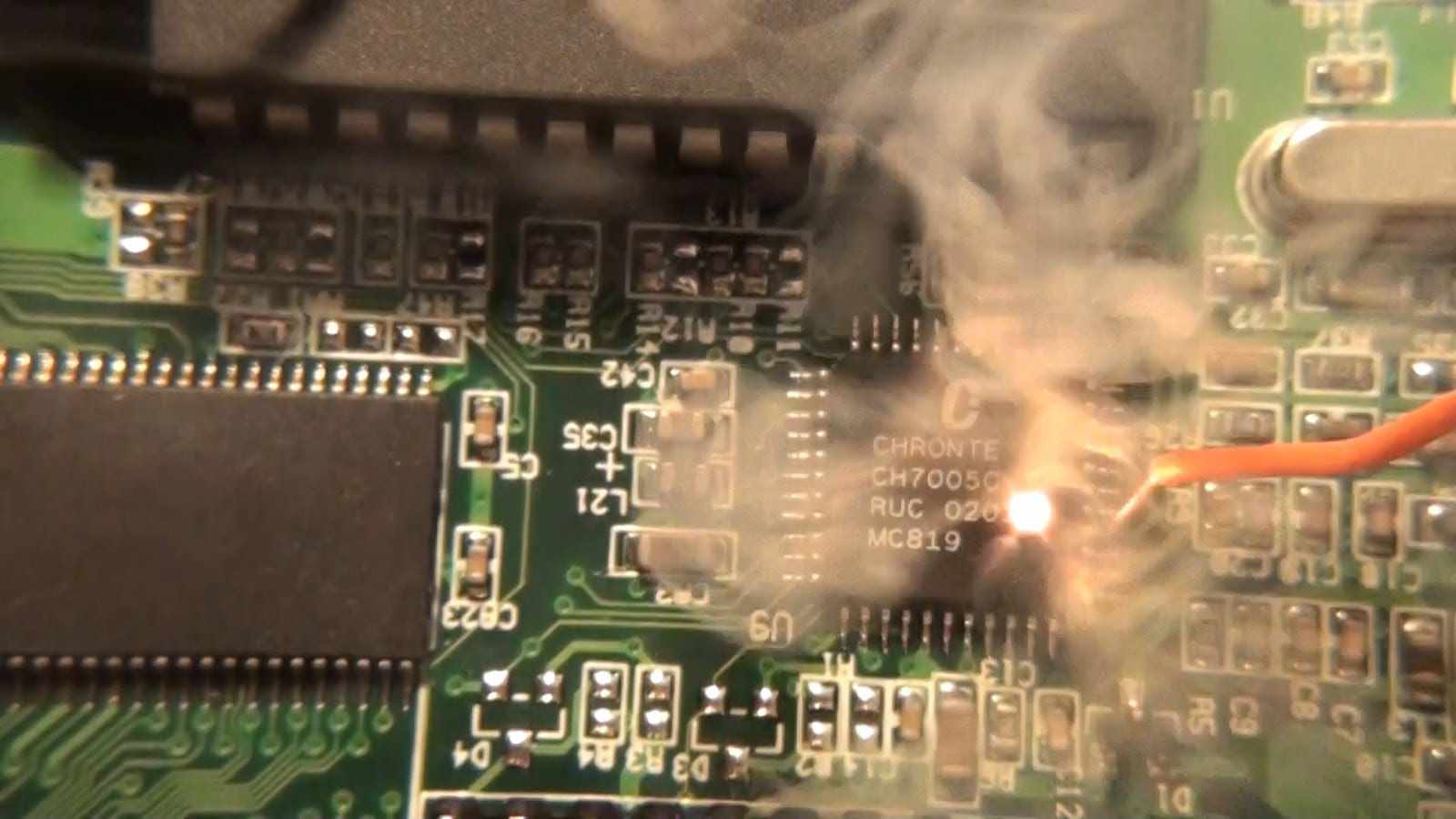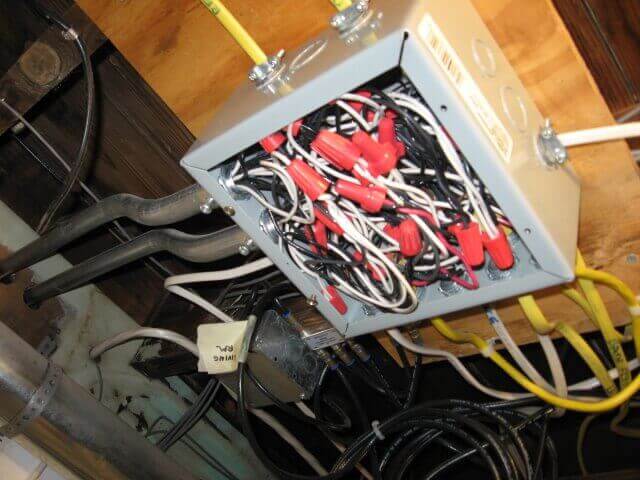
Electric power is an important, yet often misunderstood concept in electronics and electricity in general. This post will attempt to shed some light on it, and answer the age-old question: what is a watt?
Understanding electric power and the associated concepts is a very important part of circuit design. If a component tries to dissipate too much power, the magic smoke comes out. We’ve all had this happen at one time or another.
At first, I was going to make this one post. It soon grew into a monster as I went on to explain all (ok, some) of the concepts surrounding electric power.
Electric power includes concepts like real power, apparent power, power factor and more.
The first part of this series will start by tackling one of the most confusing, yet fundamental aspects of it – power vs energy. Then, we’ll take a look at power in DC circuits and purely resistive AC circuits. After that, the series will delve into power in circuits that contain reactive components like inductors and capacitors.
If knowledge is power, then knowledge of power is power squared!
Power vs Energy
This concept is one that seems to confuse a lot of people. The terms power and energy are often used interchangeably, as if they’re the exact same thing, but there is a difference.
Power is the rate at which work is performed. Its unit is the watt, for which joules per second is the measurement. Joules are the unit of measure for energy.
The total energy in any process neither increases or decreases during that process (conservation of energy), it just transforms from one form to another.
So, if I slide a book across the table, I’m not making any “new” energy or destroying it. The kinetic energy of the moving book transforms into thermal energy due to friction, making the book and table slightly warmer.
The amount of energy transformed from one form to another is known as work.
Here’s an intuitive example that illustrates the difference between power and energy:
Suppose 2 people, each weighing the same, circle a track. One person takes their time and walks around the track in 3 minutes, while the other person sprints and circles it in 40 seconds.
Both people use the same amount of energy since they did same amount of work. However, the runner used his energy in a shorter amount of time while the walker spaced it out. Although both used the same amount of energy, the runner used more power since his energy was used up quicker.
Whether we talk about the motor in your car, an electric motor, the runner, or your latest electronic project, the output power is measured in watts, which describes the number of joules of energy used every second.
You may be thinking something like but the motor in my car is rated in horsepower. That’s right, but 1 horsepower is equal to 746 watts — the base unit is still watts.
Electric Power and the Generalized Power Law
For our purpose, we’re going to worry about electric power. Therefore, power, in connection to electronics, is the rate at which electric energy converts into some other form.
Ever dreamed of being Iron Man, having the ability to build anything, anytime? Try Academy for Arduino!

Because of this, the formula for power given below holds true.
P = W/t (eq. 1)
Where W is energy in joules, and t is time.
Energy can be given by equation 2 below:
W = Q x V (eq. 2)
Where Q is coulombs of charge and V is voltage (if you want to know more about coulombs, check out the post on batteries).
Substituting the formula for energy (eq. 2) into the formula for power (eq. 1) gives:
P = (Q x V)/t (eq. 3)
Since coulombs of charge Q equals the amount of current times time t, we get, by substituting I x t into eq. 3, the final and familiar equation for power below.
P = I x V (eq. 4)
Where I is current and V is voltage.
Don’t let all the substitution and simple equations above scare you. If you work through it, you’ll see that’s it’s pretty intuitive and easy.
Some books refer to equation 4 as the generalized power law. It is general in the sense that it tells us how much power a circuit uses, but does not tell us how the circuit uses it.
Regardless of what you call it, equation 4 is part of Ohm’s Law and is useful for determining power, current and/or voltage (depending on which ones you already know) in DC circuits and purely resistive AC circuits.
As an example, suppose your flashlight uses 2 D cell batteries, each at 1.5 V. The total voltage is obviously 3 V. Let’s assume the circuit draws 0.2 A of current. How much power does the flashlight consume?
To answer this, we simply multiply the voltage by the current:
3 x 0.2 = 0.6 W or 600 mW.
What if we knew the power and voltage of the flashlight but not the current?
Simply divide the power by the voltage:
0.6/3 = 0.2 A or 200 mA.
Piece of cake.
The same holds true for purely resistive AC circuits. Let’s say your toaster is purely resistive and runs off 120 V from your wall.
The label on the toaster tells us that it draws 1,000 W of power. How much current does it draw?
To answer this, we do as we did before and divide power by voltage:
1,000/120 = 8.33 A.
Easy peasy.
Unfortunately, in the real world, few AC circuits are purely resistive. This complicates things a bit.
Electric Power in Reactive Circuits
So now we know that most AC circuits aren’t purely resistive. Now what?
Things like inductors and capacitors add a reactive component to the total power.
Think you can avoid this just because your appliance or widget doesn’t contain any inductors or capacitors?
Wrong.
The heating element in your hair dryer might be mostly resistive, but if it’s a coil there will also be some parasitic inductance. Then there’s the blower motor on that hair dryer which is made up of – you guessed it — coils of wire.
Electric motors in general cause a lot of unwanted inductance. This includes the compressor in your refrigerator, the motors in your washer and dryer, your blender – you get the idea.
And we didn’t even mention parasitic capacitance yet. All we need for that is two or more wires that are close enough together.
Imagine two wires inside some appliance right next to each other. There’s the conductor on one wire with its insulation, the insulation on the second wire, then the conductor in the second wire. That’s two conductors separated by an insulator (or dielectric) which makes a capacitor.
The figure below is an example to help illustrate this.

Figure 1: though usually smaller, there are junction boxes like this all over your house. They lurk behind your plugs, switches, light fixtures and other locations.
It’s not uncommon to open a junction box in your home, an appliance, or even the project you just finished building and see a mess of wires like figure 1. It’s safe to say that this scenario introduces both stray capacitance and inductance.
Once upon a time I was an electrician’s apprentice and was working on wiring a garbage disposal in a new hotel. The disposal had a small junction box where the AC wiring joins the wiring in the unit. Even though the breaker was off, I got a nice spark when I stuck my screw driver in this junction box. Stuffing all the wires into the box created a capacitive effect. I somehow shorted the “capacitor” out with my screw driver.
For the discussion that follows in the rest of the series, I’m going to make several assumptions. First, you’ve heard of capacitive reactance and inductive reactance and have at least some idea what they mean. Next, you’re at least somewhat familiar with the concept of impedance.
Explaining all these concepts would take several posts, so if you’re not sure about some of these things keep checking back. They’ll appear on the blog sooner or later.
We Need More [Electric] Power, Scotty!
By now you should know the difference between power and energy and how to calculate power in DC and purely resistive AC circuits.
You also know that most AC circuits aren’t purely restive and suspect that this can complicate things.
It does a bit, but it’s nothing that’s too difficult to wrap your mind around.
In the next part of this series, we’ll start by going over some common terms associated with electric power.
Then, we’ll go over a helpful little friend that resembles a simple geometric shape that we’re all familiar with and how he can help us.
After that, we’ll delve into calculating electric power in AC circuits that sport a phenomenon known as reactance.
Stay tuned!
Meanwhile, comment and tell us what your biggest questions about power are and maybe I’ll answer them in this series!
Ever dreamed of being Iron Man, having the ability to build anything, anytime? Try Academy for Arduino!

Electronics Tips & Tutorials Sent Directly to Your Inbox

Submit your email & you'll get:
- Exclusive content that I don't put on the blog
- The checklist 10 mistakes all electronics enthusiasts make (& how to avoid them)
- And more!
Leave a Reply